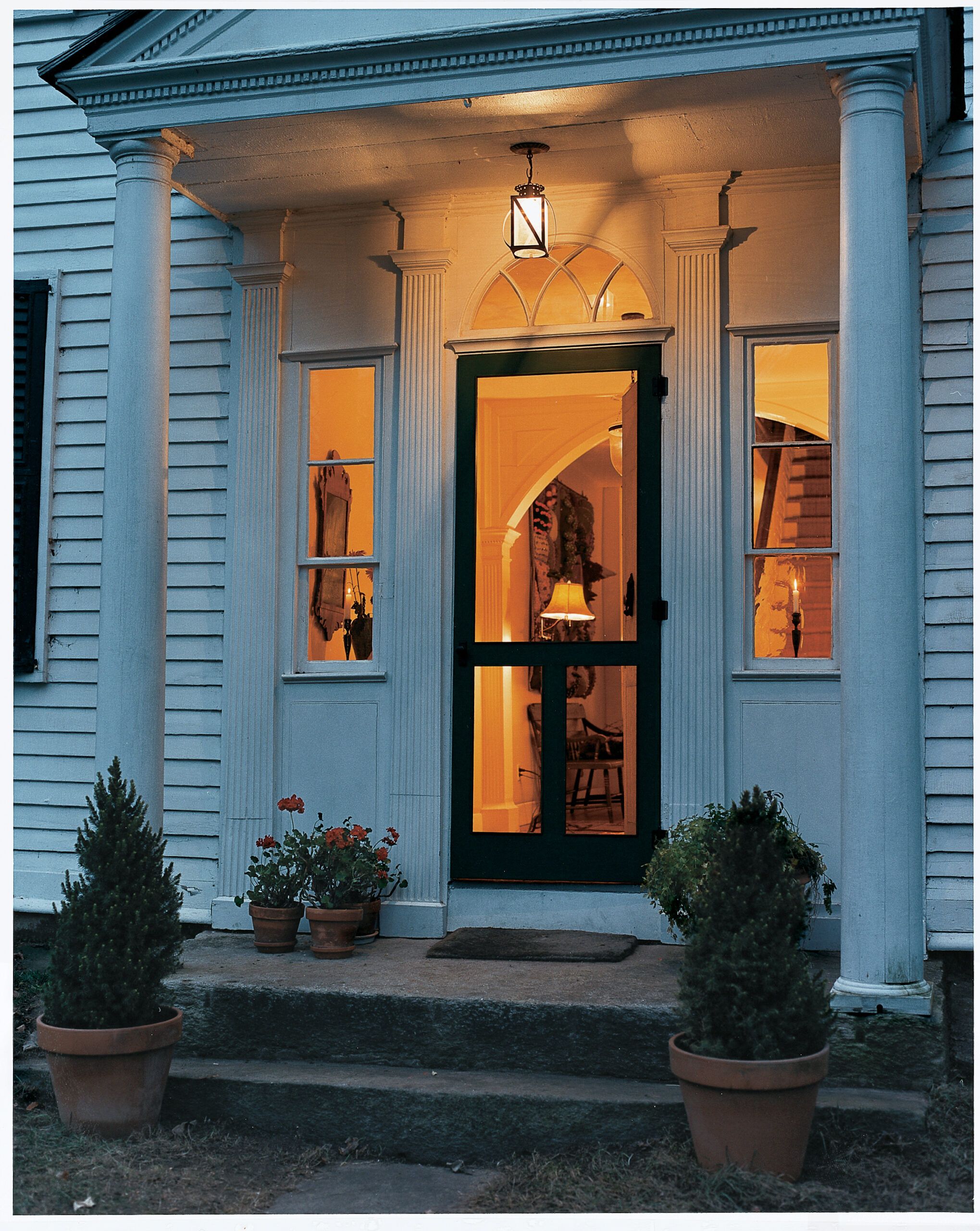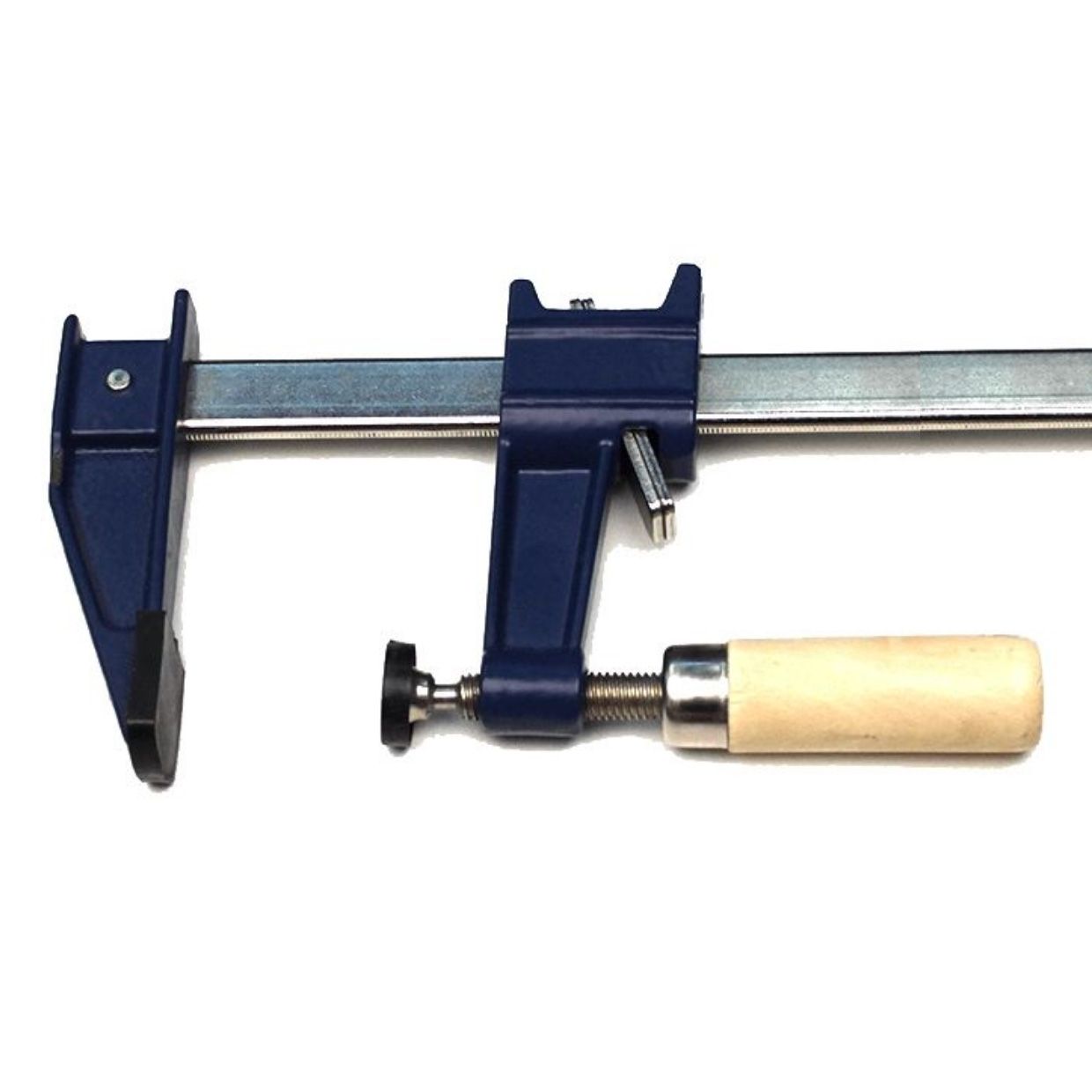We may be compensated if you purchase through links on our website. Our team is committed to delivering honest, objective, and independent reviews on home products and services.
Project details
Skill
Cost
Estimated Time
When summer arrives, the desire to enjoy warm breezes, chirping crickets, and fragrant flowers becomes irresistible. A wooden screen door can help you experience these delights while keeping insects at bay. By assembling a door using a kit, you gain more design flexibility than the limited options available at a lumberyard. Millwork companies can create door kits based on your specifications and preferences.
In this guide, we’ll go over the steps on how to build a screen door.
Tools and Materials Needed To Build a Screen Door
Here are the tools and materials necessary to build a screen door:
- Chisel
- Clamp
- Door screening
- Drill bit (¼-inch)
- Drill/driver
- Glue
- Hammer
- Hand plane
- Hinges
- Latchesets
- Phillips screwdriver
- Spade bit (9/16-inch)
- Spline
- Spline roller
- Utility knife
Measuring and Planning Your Screen Door
A well-fitting screen door starts with accurate measurements and proper planning. Take time in this step to measure carefully and choose the right materials.
Taking Door Measurements
Measure the height and width of your door opening in multiple places, as older homes may have settled unevenly. Use the smallest measurements possible so your screen door will fit properly. Remember to account for any weatherstripping or threshold when taking measurements. Be meticulous, as even a slight discrepancy can affect your screen door’s operations.
Choosing the Right Wood for Your Door
Select a durable, warp-resistant wood for your screen door. Cedar is an excellent choice due to its natural resistance to rot and insects. Pine is another popular option, especially if you plan to paint the door. Whichever wood you choose, make sure it’s straight-grained and free of knots for stability and longevity. The right wood enhances the door’s appearance and provides enduring functionality.
Choosing the Right Screen Material
Think about your climate and intended use when selecting screening material. Here are common screen materials:
- Fiberglass: This material is popular for its durability and ease of installation. It’s also less likely to dent or crease than metal screens.
- Aluminum: Aluminum screening is a good alternative if you prefer a more traditional look or need extra strength.
- Bronze or copper: For areas with high humidity, use bronze or copper screening to prevent corrosion. Each material offers distinct advantages, so choose one that best suits your home’s needs.
In the video below, This Old House general contractor Tom Silva goes through the steps of building and hanging a screen door.
How Screen Door Kits Work

Wood screen door kits offer a cost-effective and practical solution for adding a period-appropriate complement to your home. These kits typically include most of the door’s components: mortised-and-tenoned rails and stiles, screen-frame inserts, trim, and decorative brackets. However, you’ll need to supply your own glue, screening, spline, hinges, and latchsets. Some of these additional items may be available from the same company that sells the kit.
Building the Door Frame
The first step in creating your screen door is to assemble the frame. This process involves checking the fit of components, assembling the parts, and securing them with glue and dowels.
Check the Fit
Before applying any glue, dry-assemble the parts to make sure everything fits correctly. If a tenon doesn’t fit its mortise, pare it down with a chisel. Attention to detail during this stage can prevent future issues with the door’s alignment and function.
Assemble the Frame
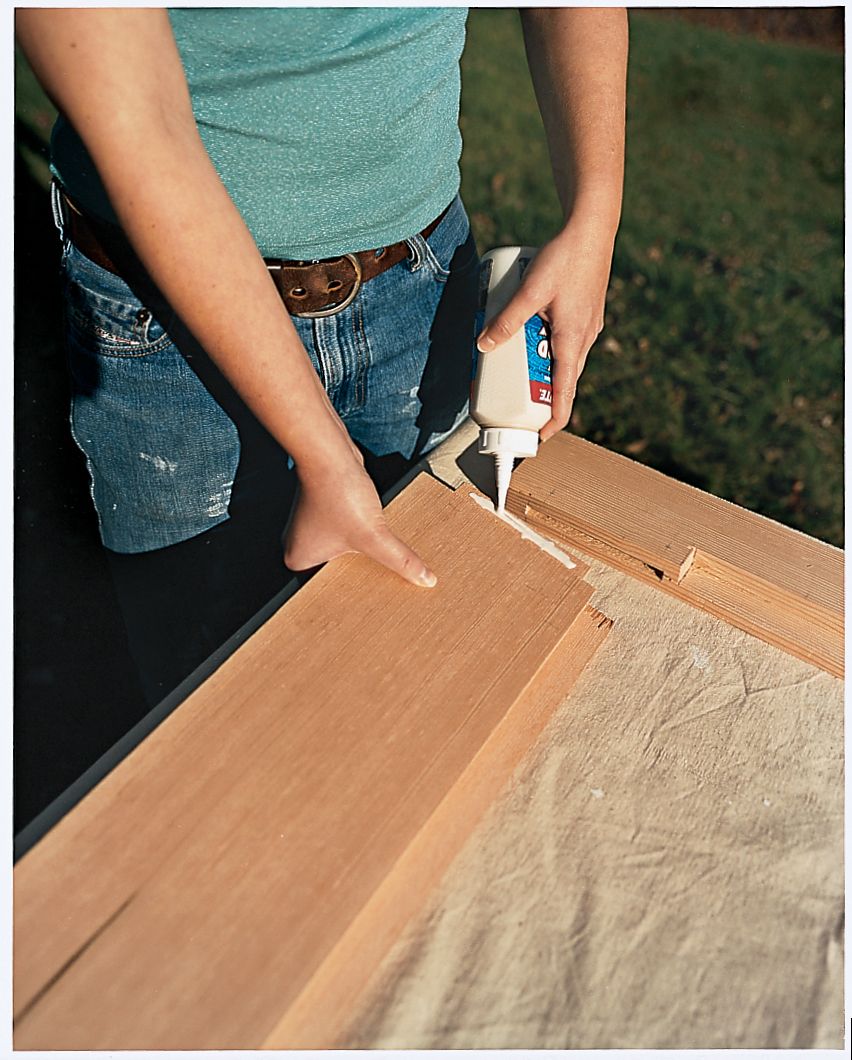
Follow these steps to assemble the door’s frame:
- With the door assembled, lay out the center stile so it butts the center of the middle and bottom rails. Mark where the stile overlaps with the rails.
- Using these marks as a guide, drill two centered, ¼-inch-diameter by ⅞-inch-deep holes into both ends of the stile.
- Drill corresponding holes in the two rails, making sure those holes are also centered.
- Disassemble the door, then glue ¼-inch-diameter by 1½-inch-long hardwood dowels into the holes in the stile.
- Fit the stile together with the middle and bottom rails.
- Apply glue to the tenons on all the rails, then reassemble the entire frame.
Clamp the Frame and Check for Squareness
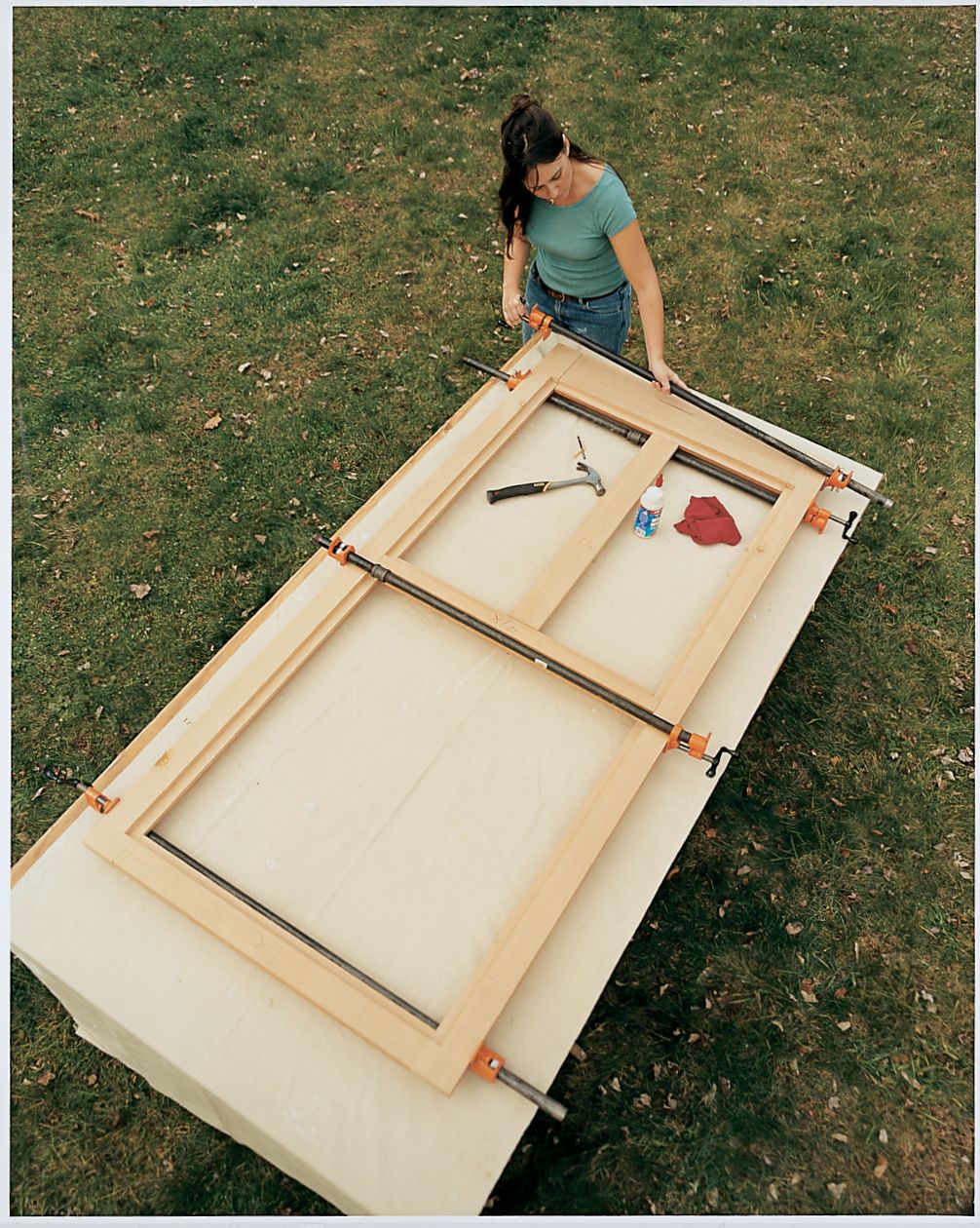
Next, clamp the frame and check for squareness. Here’s how:
- Use 4-foot-long pipe or bar clamps to draw the frame together tightly.
- Apply clamps horizontally across the door, alternating between the front and back faces to prevent the wood from bowing.
- Check for squareness by measuring diagonally from corner to corner in both directions.
- Adjust the clamps until these measurements are equal, indicating a square frame. Work quickly, as adjustments become difficult once the glue sets.
Lock the Joints with Dowels
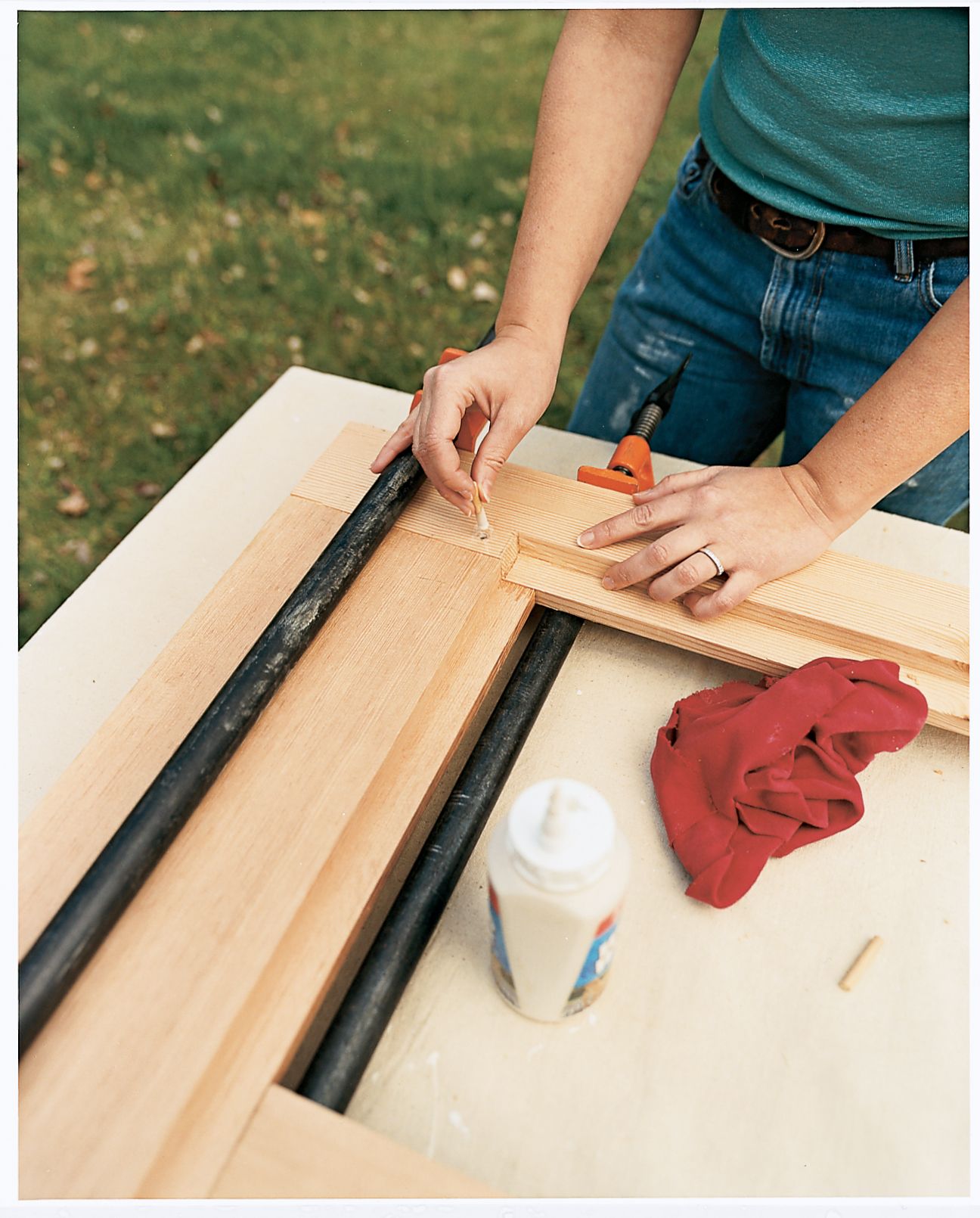
For added strength, reinforce the mortise and tenon joints with dowels.
- Drill 1/4-inch holes through the stiles and into the tenons, about 1/2 inch from the inside edge of the stile.
- Apply glue to 1½-inch-long dowels and tap them into the holes.
- Allow the glue to dry overnight before removing the clamps and sanding the dowels flush.
- On the front face of the door, glue and nail frame molding inside the screen-opening perimeter using ¾-inch brads.
Preparing the Screen
With the frame assembled, it’s time to add the screen. The goal is to create a taut, durable screen that effectively keeps insects out while allowing airflow.
Assemble the Screen Insert Frames
To construct the screen insert frames, use glue and brads at the corners for a secure fit. Once assembled, paint, stain, or varnish the frame as desired. Allow it to dry completely before proceeding to the next step.
Attach the Screen to the Frame
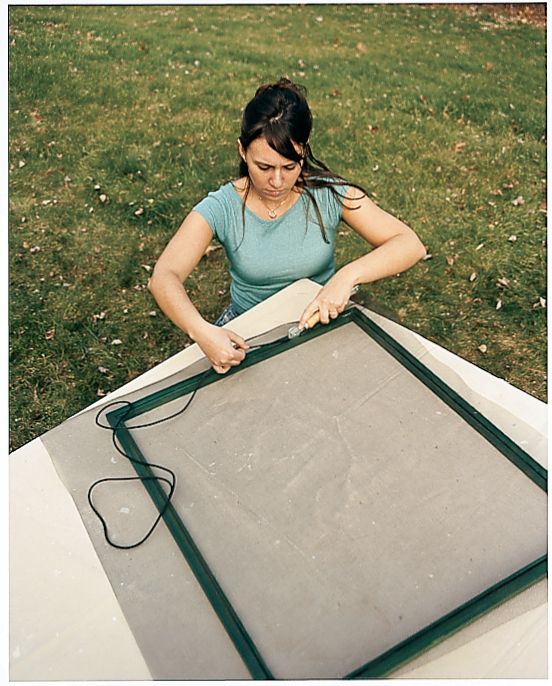
Cut the screen and attach it to the form by following these steps.
- Cut a piece of screen approximately 2 inches larger than the opening on all sides.
- Use the convex wheel on your spline roller to gently press the screen into the groove around the frame’s perimeter.
- Then, use the roller’s concave side to push the rubber spline into the groove, securing the screen in place.
- Trim any excess screen close to the spline using a utility knife, being cautious not to damage the screen or frame.
Hanging Your New Screen Door
Proper installation means your screen door functions correctly and lasts for years. Carefully align the door properly and secure it firmly to the frame.
Shim the Door in the Opening
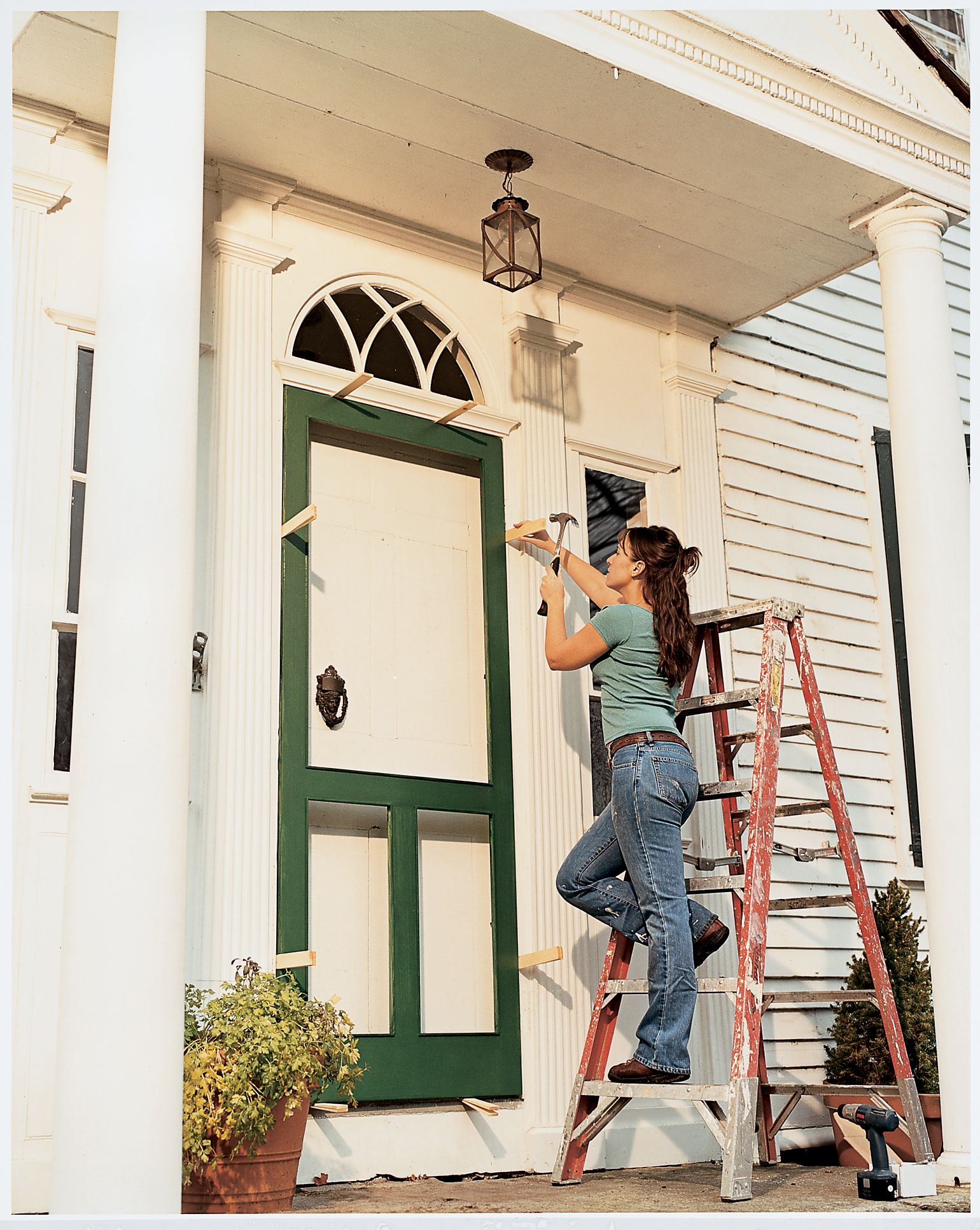
You’ll need to shim the door in the opening before installing the hinges and hardware.
- Position the completed door–minus the screens–in the doorway opening.
- Align its face flush with the face of the door casing.
- Use wood shims around the door to hold it in place, maintaining a 1/8-inch space along the sides and approximately 3/16-inch space at the top and bottom. This spacing allows for smooth operation and accounts for seasonal wood expansion.
Install the Hinges
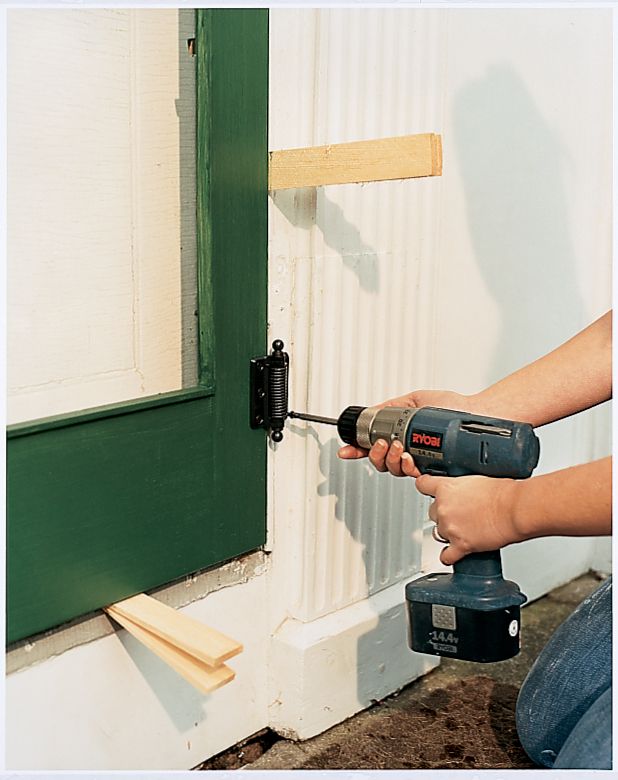
Mark the hinge locations and install all three hinges.
- Mark the hinge locations on both the door and the frame.
- Install three hinges: one 5 inches from the top, one 5 inches from the bottom, and one in the middle.
- Drill pilot holes as necessary and screw the hinges in place.
- Use sturdy, weather-resistant hinges for long-lasting performance.
Install the Screens and Hardware
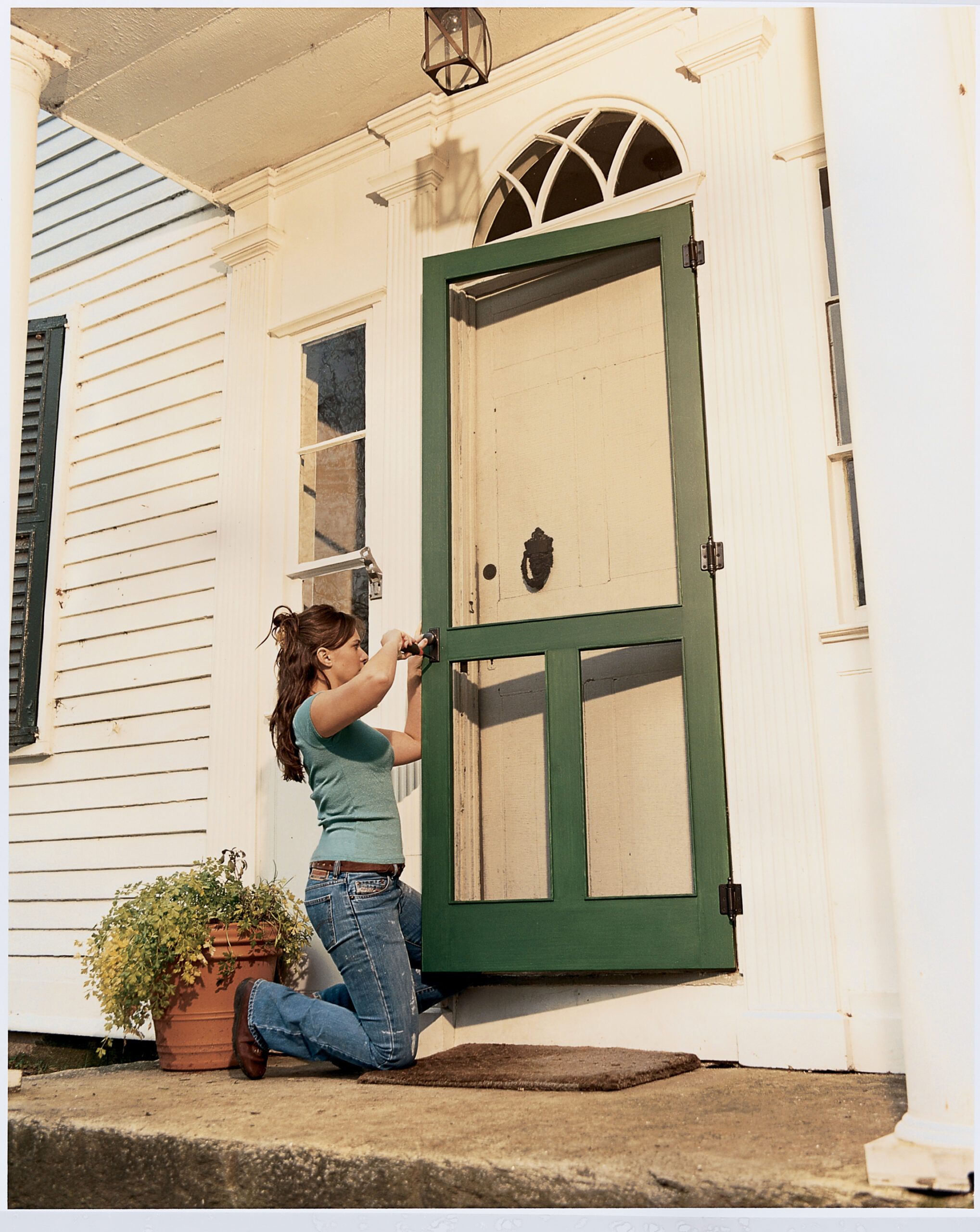
Once the hinges are securely in place, check that the door opens and closes smoothly, adjusting the hinge screws if necessary. You may need to plane the edges slightly if the door binds in any spots.
- Slip the screen inserts into place and secure them with wooden turn buttons mounted to the back side of the door.
- Install a no-mortise latchset centered on the door’s middle rail.
- Line the latch case up to the edge of the rail on the inside of the door, then mark the spindle location.
- Drill a 9/16-inch-diameter hole at this mark.
- Hold the latch case on the door, thread the lever’s spindle through the hole, then screw the case down.
Troubleshooting Common Problems
Even well-built screen doors can develop issues over time. Knowing how to address these problems can help extend the life of your door and maintain its functionality. Early intervention often prevents small problems from escalating into larger issues.
Dealing with Warping or Sagging
If your door begins to warp or sag, first check that all joints are still tight. If some have loosened, reinforce them with wood glue and clamps. Minor warping might be corrected by adjusting the hinges or adding a turnbuckle to the bottom of the door. For severe cases, you might need to replace warped components or rebuild the door.
Fixing Screen Tears or Holes
You can sometimes repair small tears in the screen with a patch kit available at most hardware stores. For larger holes, replacing the entire screen is usually the best option. Remove the old spline and screen, cut a new screen to size, and install it using the spline roller technique described earlier. Regular maintenance and prompt repairs can significantly extend the life of your screen door.
